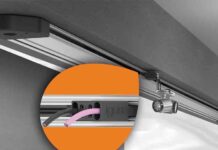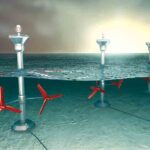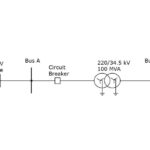
Electricity plays an important role in the modern society because of its versatility with respect to input energy form. Electricity also offers total environmental, enhancement opportunity as compared to other energy sources used by the consumer. However, the rapid advancement in the field of electronics and its innumerable applications in residential, commercial, industrial and agricultural sectors, the demands for quality and uninterrupted power supply have increased tremendously. The primary requirement of distribution companies is to give power supply to the consumer in a reliable manner at a minimum cost, taking into consideration the constraints and the criteria such as reliability, economics, environment, society impacts and value of electricity.
The main hindrance in ensuring uninterrupted power supply in the overhead distribution system is the unavailability of space in developed urban areas. Falling of tree branches on the overhead distribution lines and short circuiting of conductors due to heavy winds and gales, rains, accidents due to bare conductors, failure of supporting structures, etc. Under ground cable system is very useful in low voltage distribution network in urban areas to mitigate the problem of space availability and minimize frequent breakdown in the lines.
Underground cables offer an affordable and justifiable solution for critical parts and in some cases the entire length of overhead high voltage power lines. With appropriate technology used in appropriate places, the environment impact of underground cables can be minimized. Underground cables help in ensuring uninterrupted power supply that is hitherto uncommon in overhead systems. The main hindrance in ensuring uninterrupted power supply through overhead systems is the non-availability of space in developed urban areas. Underground cables can transmit power across densely populated areas where land is costly or environmentally or aesthetically sensitive
A cable is basically an insulated conductor and is used for underground distribution of electricity. Insulation is used to cover the conductor and provides isolation from the surroundings. It should possess high resistance, high dielectric strength, high mechanical strength and long durability. Underground cables are generally used in densely populated areas such as cities and metros, where there is high density of automobiles; high raised commercial, residential buildings and places; where vital installations of uninterrupted power supply such as water supply system, hospitals and IT services, etc. Underground cables are also preferred in industries, sub-stations, railways and road crossings, servicing of residential installations and other similar locations. Underground cables system provides high reliability, least interruptions due to line faults and good safety. In addition to this, the I2R losses are quite low compared to overhead system due to the absence of steel wires. Its advantages such external protection is provided against mechanical injury, moisture entry and chemical reactions.
Cable design:
A power cable commonly consists of Conductor, Bedding, Armouring, Outer sheath and Insulation. Underground cables consist of one central core or a number of cores of tinned stranded copper or aluminium conductor’s insulation from each other. A metallic sheath of lead or alloy or of aluminium is provided around the insulation to protect it against ingress of moisture. The initial heavy cost is the only factor which discouraged the use of underground cables for the purpose of transmission and distribution of electric power.
For mining, extra mechanical strength is provided to cable with double armouring. For wind power plant customers generally require flexible and UV protected cable with mechanical tough sheath. The underground cables have several advantages such as less liable to damage through storms, lightning, low maintenance cost, less chances of faults, smaller voltage drop and better general appearance. Voltage drop is also an important factor of cable design.
The type of cable to be used at a particular location is determined by the mechanical considerations and the voltage at which it is required to operate. According to voltage these are classified as low-voltage cables for operating voltage up to 1kV, high-voltage cables for operating voltage up to 11kV, super tension cables for operating voltage up to 33 kV, extra high tension cables for operating voltage up to 66kV and extra super voltage power cables for operating voltage beyond 132kV. The current rating of the cables apart from the above factors also depends on a large number of other factors such as method of cable laying employed, spacing between the cables, number of cores and the thermal conductivity of the soil. An approximate indication of the current carrying capacity for Indian conditions, which is based on a maximum conductor temperature of 80 °C for 11KV cables and above. The ground ambient temperature of 30 °C applies to most places in India.
Selection of Cables:
Electrical cables are the nerves of any electrical network. Cables consist of a huge percentage of capital investment in any electrification project. And, they are the most vulnerable to failures too. Most of the cable failures could be attributed to improper selection. Right selection of cables is not only very important for reliability of power supply and safety of devices as well as human beings present around them, it also prevents loss of assets and saves costly business hours. The type of cable used at a specific location is determined by the mechanical considerations and the voltage at which it is required to operate. The grade of insulation of the underground cable depends on the voltage levels. For selection of cable of correct size and type for a particular application, the following factors/ Selection Parameters to be considered are:
- Voltage Rating: This is the rated voltage of the system, in which the cable is to be installed & used. The type of operating system such as dc (2-wire or 3-wire) or ac (Single-phase, three phase), earthed or unearthed and operating voltage such as 415/240 V, 11, 33, 66, 132 KV etc.
- Type of Conductor: The most generally used conductor in a cable is either Copper or Aluminium. As is known, for the same voltage rating, type, insulation, cross sectional area and method of installation, the continuous current rating, the short time current rating and the per unit length cost of a Copper cable is considerably higher than that of an Aluminium cable.
- Type of Insulation: Most of today’s cables are insulated either with PVC or with XLPE. Obviously, for the same conductor material, voltage rating, type, insulation, and other parameters, the per unit length cost of an XLPE insulated cable is considerably higher than that of a PVC insulated cable.
- Type of Cables: Unarmoured cables are used in indoor installations and on above ground installations, such as in cable trays, in pre-built concrete cable trenches, etc., Armoured cables are mandatory for any underground cable installation. The armour can be a wire or strip made of Galvanised Iron or Aluminium. In many cases, this armour is connected to the earthing system, preferably at one end only, generally, the sending end.
- Continuous Current Rating: The continuous current rating of cables with Aluminium / Copper conductor is made available by the manufacturers. But, it should be noted that the continuous current ratings are given by the manufacturers for certain standard conditions of laying. In practice, it is not possible to get or to maintain these standard conditions. Thus, certain rating factors are applied to arrive at the practical continuous current rating.
- Rating Factors: The Rating factor for variation in ground temperature or in duct temperature, variation in ambient temperature, variation in thermal resistivity of soil and Group Rating Factor – Vertical Spacing & Horizontal Spacing should be considered appropriately.
- Voltage Drop: Cables consist of resistance & reactance. And, thus the current flowing though such an impedance will cause a voltage drop. This drop should not affect the loads connected by the cable.
- Short Circuit Values: The “short-circuit current rating” is the maximum short-circuit current that a component can withstand. Failure to provide adequate protection may result in component destruction under short circuit conditions. Short circuits and their effects must be considered in selecting cables. These cables should have a short circuit rating which is the highest temperature the cable can withstand during an electrical short circuit lasting up to about half a second.
- No of Core: No of core selection is depends upon power system. For Single Phase Power Supply, we can use 2 core cables for three phase supply we can use 3.5 core or 4 core cables for HV supply.
- Economics: It is also an important factor for selecting the type of cable. It is to be kept in mind that the cost of cable should not be such large that it causes loss and another cable may fetch the same results in low cost and loss.
- Environmental Conditions: Cable operates at its best when it is installed in its optimum environmental conditions. For example, XLPE cables work well in areas where moisture content is good. Thus, proper cable should be selected so that the system becomes more efficient.
Cross Linked Polyethylene Cable (XLPE)
XLPE cable is most commonly used in transmission and distribution network due to its characteristics. Specially treated low density polyethylene results in cross linking of carbon atoms and the compound is a new material having extremely high melting point with light weight, small dimension, low dielectric constant, higher current carrying capacity, high overload capacity, higher short circuit rating and high mechanical strength due to high thermal resistance and very low moisture absorption. These cables can be directly laid on the soil bed and easily worth for voltages up to 33 kV. Depending on the type of cores, the cable is further classified as 1 core, 3 core, and 3 ½ core. Commonly used conductor materials are aluminium and copper. However, aluminium cables are more common because of expensiveness of copper.
Advantages of underground cables:
- Less subjected to damage from severe weather conditions (mainly lightning, wind, freezing).
- Underground cables need a narrower surrounding strip than overhead line to be kept permanently clear for safety, maintenance and repair.
- Reduced range of electromagnetic fields (EMF) emission, into the surrounding area. The electric current in the cable conductor produces a magnetic field, but the closer grouping of underground power cables reduces the resultant external magnetic field and further magnetic shielding may be provided.
- Underground cables pose no hazard to low flying aircraft or to wildlife.
- Underground cables have much less danger of conductor theft, illegal connections, sabotage, and damage from armed conflict.
- UG cables have greater safety and less interference with communication lines, with better outlook.
- Burying utility lines makes room for more large trees on sidewalks,the trees conveying environmental benefits and increase of property values.
- Apart from creating less visual and environmental impact that generates large opposition from local communities, underground cables have several other unique benefits, in particular, they:
- have lower transmission and distribution losses;
- can absorb emergency power loads;
- have lower maintenance costs;
- require a narrower band of land to install, and;
- are less susceptible to the impacts of severe weather.
Operating limitations with cables
- Cables required high charging current and reactive power for operation. The reactive power is capacity in nature and can affect at lightly loaded conditions due to Ferranti effects of rising of sending end voltage of the cable.
- Flow of charging current causes heating of cables and reduces the lower current capability. Sometimes, higher dielectric loss may further rise in the temperature.
- Switching of cable capacitive current may give rise to over voltages.
- The main limitations of underground cable are expensive compared to OH lines, difficulty in fault detection, restoration of power supply takes longer time during break down and more expensive maintenance and management.
- For ensuring longer life of the cable, UG cable should never be overloaded for longer duration and always advisable to restrict the loading to about 75% of the rated capacity.
- Before carrying out maintenance of the UG cable, care should always be taken to discharge the static charges stored in the cable.
- Underground system cannot be operated above 66 KV because of insulation difficulties but overhead system can be designed for operation up to 400 KV or higher even.
- Underground cables are more subjected to damage by ground movement.
- Whereas overhead lines can easily be uprated by modifying line clearances and power poles to carry more power, underground cables cannot be uprated and must be supplemented or replaced to increase capacity. Transmission and distribution companies generally future-proof underground lines by installing the highest-rated cables while being still cost-effective.
Conclusion:
Underground cables offer an affordable and justifiable solution for critical parts and in some cases the entire length, of overhead high voltage power lines. Underground cables are at installation is more expensive than overhead lines. However, the Maintenance cost of underground system is very low in comparison with that of overhead system. Underground system is free from interruption of service on account of thunderstorm, lightning and objects falling across the wires. In underground system there is no interference to communication circuits. It may be beneficial to place 11kVand 420 V distribution systems in densely populated urban areas through underground cable.

If you want to share thoughts or feedback then please leave a comment below.




















Only desire to say your post is spectacular. The clearness as part of your put up is quickly remarkable and i can assume you happen to be an authority on this area. Properly together with your permission permit me to grab your rss feed to keep as much as date with succeeding put up. Thanks a million and please continue to keep up the superior do the job.
I tried to submit a comment earlier, but it hasnt shown up. I believe your spam filter might be broken?
Hmm, that is some compelling information youve got going! Makes me scratch my head and think. Keep up the good writing!